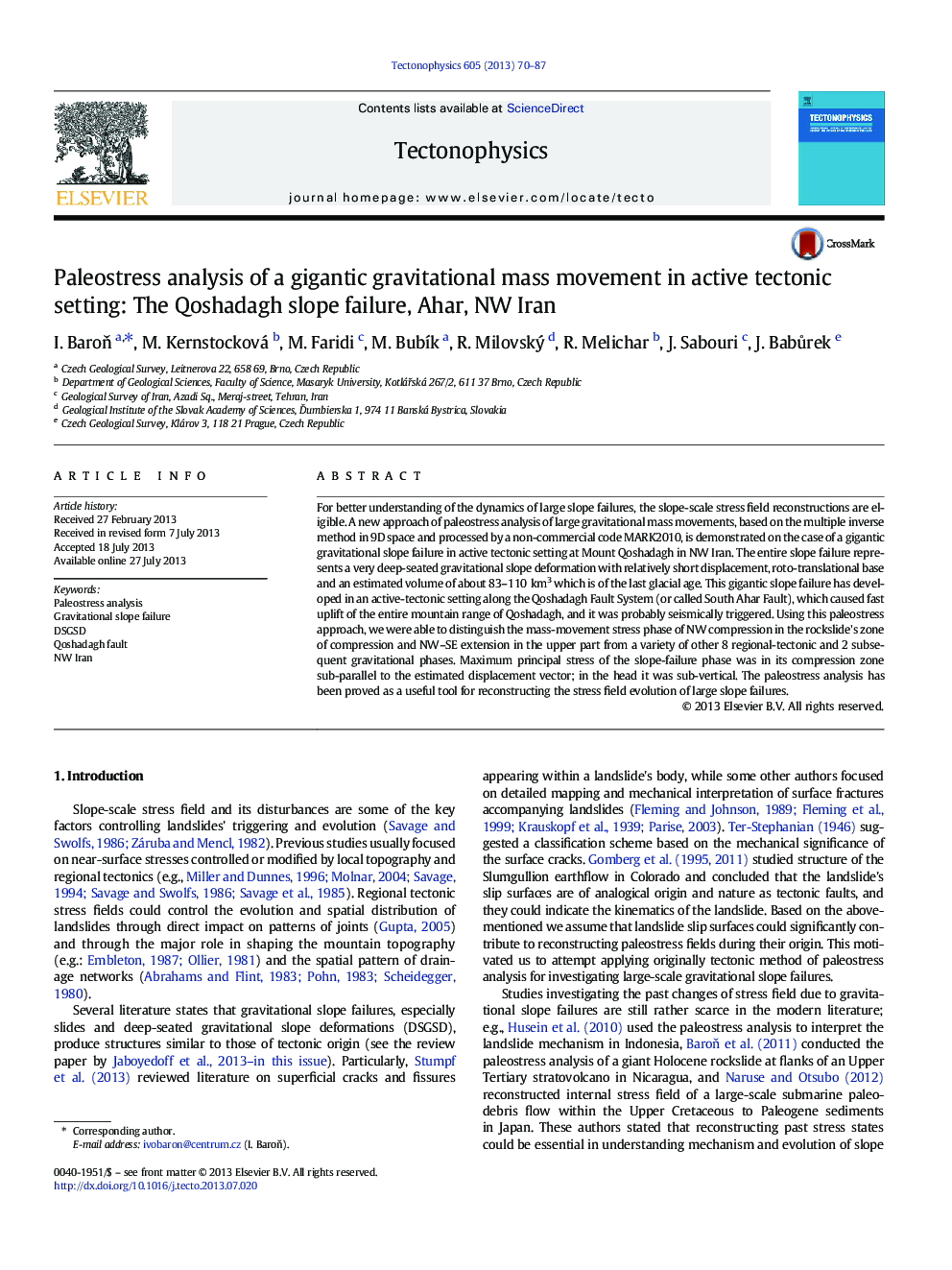| کد مقاله | کد نشریه | سال انتشار | مقاله انگلیسی | نسخه تمام متن |
|---|---|---|---|---|
| 4692176 | 1636782 | 2013 | 18 صفحه PDF | دانلود رایگان |
• Large gravitational slope failure along the active Qoshadagh fault was investigated.
• The failure of an estimated volume of 83–110 km3 caused new faults and folds.
• Paleostress phase of NW compression (and NW–SE extension) was related to sliding.
• σ1 of the slope-failure phase was sub-parallel to the displacement of the body.
• Other 8 regional-tectonic and 2 other gravitational phases were distinguished.
For better understanding of the dynamics of large slope failures, the slope-scale stress field reconstructions are eligible. A new approach of paleostress analysis of large gravitational mass movements, based on the multiple inverse method in 9D space and processed by a non-commercial code MARK2010, is demonstrated on the case of a gigantic gravitational slope failure in active tectonic setting at Mount Qoshadagh in NW Iran. The entire slope failure represents a very deep-seated gravitational slope deformation with relatively short displacement, roto-translational base and an estimated volume of about 83–110 km3 which is of the last glacial age. This gigantic slope failure has developed in an active-tectonic setting along the Qoshadagh Fault System (or called South Ahar Fault), which caused fast uplift of the entire mountain range of Qoshadagh, and it was probably seismically triggered. Using this paleostress approach, we were able to distinguish the mass-movement stress phase of NW compression in the rockslide's zone of compression and NW–SE extension in the upper part from a variety of other 8 regional-tectonic and 2 subsequent gravitational phases. Maximum principal stress of the slope-failure phase was in its compression zone sub-parallel to the estimated displacement vector; in the head it was sub-vertical. The paleostress analysis has been proved as a useful tool for reconstructing the stress field evolution of large slope failures.
Journal: Tectonophysics - Volume 605, 11 October 2013, Pages 70–87
